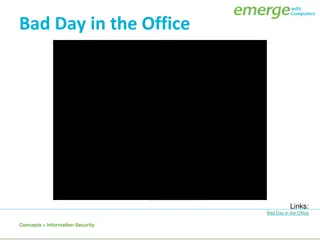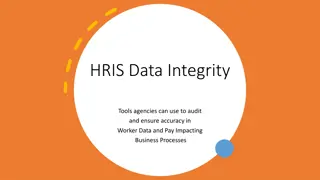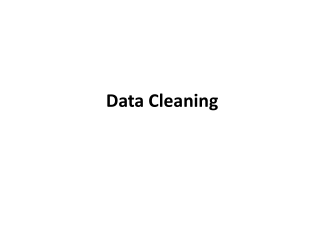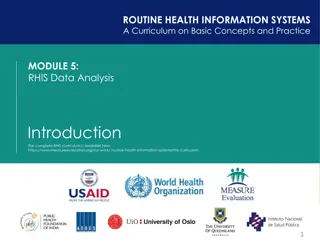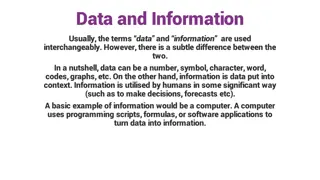Understanding Data Backup Best Practices
Data backup is crucial for protecting your information in case of disasters or accidents. Learn about the importance of data backup, different backup options like removable media, external hard drives, hardware appliances, and cloud services, as well as the 3-2-1 backup strategy. Make sure to verify key aspects of your backups regularly to ensure data integrity and availability.
Download Presentation
Please find below an Image/Link to download the presentation.
The content on the website is provided AS IS for your information and personal use only. It may not be sold, licensed, or shared on other websites without obtaining consent from the author. Download presentation by click this link. If you encounter any issues during the download, it is possible that the publisher has removed the file from their server.
Presentation Transcript
What Is a Data Backup? Data backup is the practice of copying data from a primary to a secondary location, to protect it in case of a disaster, accident or malicious actions. Typically, backup data means all necessary data for the workloads your server is running. This can include documents, media files, configuration files, machine images, operating systems, and registry files. Essentially, any data that you want to preserve can be stored as backup data.
Data Backup Options There are many ways to backup your file. Choosing the right option can help ensure that you are creating the best data backup plan for your needs. Below are five of the most common techniques or technologies:
1.0 Removable Media Removable media backup, such as CDs, DVDs, and flash drives, has long been a popular method of data backup. 2.0 Redundancy is a vital aspect of data backup, as it involves creating multiple copies of your data to ensure its safety and accessibility. By having more than one copy of your data, you can minimize the risk of data loss in case of a hardware failure, natural disaster, or other unforeseen circumstances. 3.0 External hard drives are a popular choice for data backup due to their convenience and ease of use. These devices connect to your computer via USB or other connection types and offer a large amount of storage space for your data.
4.0 Hardware appliances are dedicated devices designed specifically for data backup and storage. These appliances often come with built-in backup software and can support various storage types, such as hard drives, tape drives, or cloud storage. 5.0 Cloud backup services are a popular option for data backup, providing off-site storage and accessibility via the internet. These services store your data on remote servers, typically run by a third-party provider, allowing you to access your data from anywhere with an internet connection.
What Is a 3-2-1 Backup Strategy? A 3-2-1 backup strategy is a method for ensuring that your data is adequately duplicated and reliably recoverable. In this strategy, three copies of your data are created on at least two different storage media and at least one copy is stored remotely.
List of items to verify about data backups: Date of the last backup Contents of the backup Data integrity of the backup Availability of all backup media for data restore
















